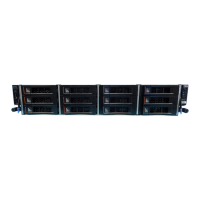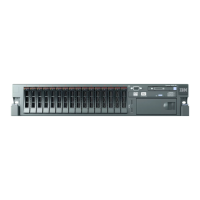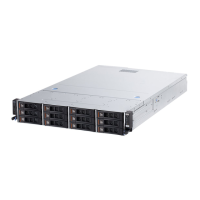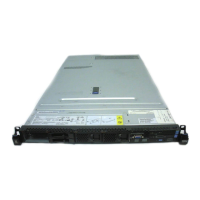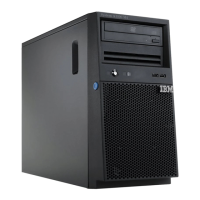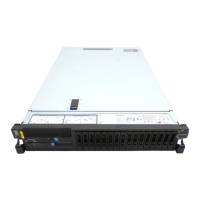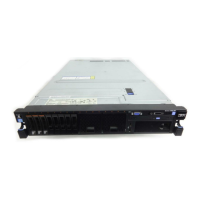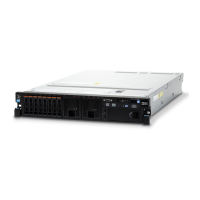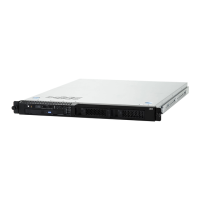The following illustration shows the LEDs on the rear of the server.
Ethernet activity LEDs: When these LEDs are lit, they indicate that the server is
transmitting to or receiving signals from the Ethernet LAN that is connected to the
Ethernet port.
Ethernet link LEDs: When these LEDs are lit, they indicate that there is an active
link connection on the 10BASE-T, 100BASE-TX, or 1000BASE-TX interface for the
Ethernet port.
AC power LED: Each hot-swap power supply has an AC power LED and a DC
power LED. When the AC power LED is lit, it indicates that sufficient power is
coming into the power supply through the power cord. During typical operation, both
the AC and DC power LEDs are lit. For any other combination of LEDs, see
“Power-supply LEDs” on page 22.
DC power LED: Each hot-swap power supply has a DC power LED and an AC
power LED. When the DC power LED is lit, it indicates that the power supply is
supplying adequate DC power to the system. During typical operation, both the AC
and DC power LEDs are lit. For any other combination of LEDs, see “Power-supply
LEDs” on page 22.
Power-supply error LED: When the power-supply error LED is lit, it indicates that
the power supply has failed.
System-locator LED: Use this LED to visually locate the server among other
servers. You can use IBM Systems Director or IMM2 web interface to light this LED
remotely.
System-error LED: When this LED is lit, it indicates that a system error has
occurred. An LED on the light path diagnostics panel is also lit to help isolate the
error.
PCI riser-card adapter expansion slot locations
Based on the server configuration, the locations of the adapter expansion slots from
the rear of the server may be either of the following.
Chapter 1. The System x3630 M4 Type 7158 server 21

